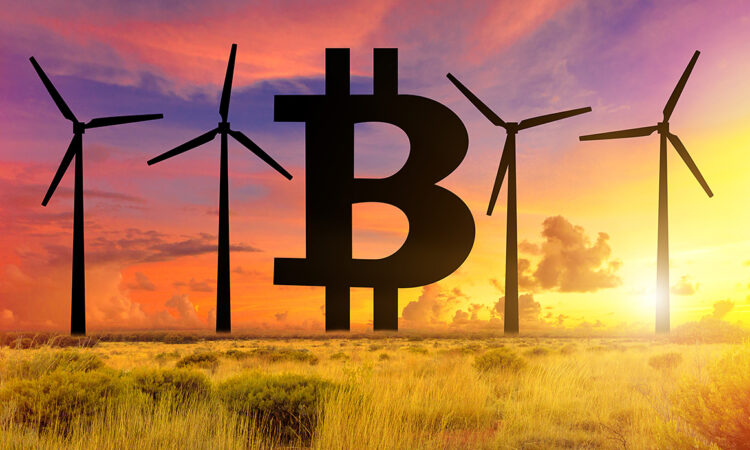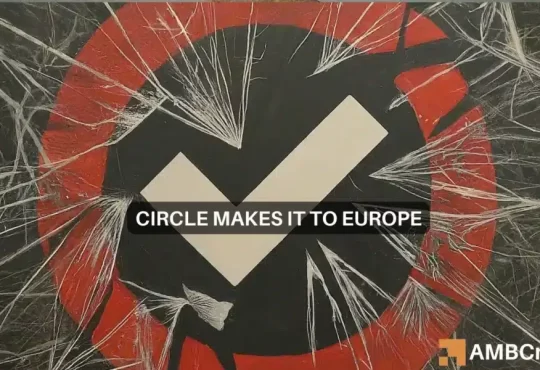
Crypto miners are rebranding.
The infamously energy-intensive industry says it can not only consume power responsibly, but also improve the nation’s power system, writes POLITICO’s E&E News reporter Jason Plautz.
It’s a tall order for an industry that uses more energy per year than Australia. The “mining” of bitcoin and other types of digital currency — during which computers solve complex puzzles around the clock — has driven large increases in demand in some areas.
When those regions rely on coal and natural gas for their electricity, it’s bad news for cutting planet-warming pollution.
But the industry’s days of unfettered power use may be coming to an end. Aware that some states are considering a regulatory crackdown, companies are seeking to clean up their environmental image.
John Olsen, who works for the Blockchain Association, told Jason there are ways crypto mining can boost the clean energy market and help stabilize the grid.
For example, he said, some miners have set up shop in areas where wind and solar power outpace the demand for it. That, he argued, is a win-win, offering large-scale renewable projects a reliable consumer of power that would otherwise be wasted.
While crypto miners need a lot of power, they don’t need it continuously — potentially making them the ideal customer for intermittent wind and solar energy. That could, in theory, drive more low-carbon power onto the grid.
Major bitcoin miners have also backed a new company called Sustainable Bitcoin Protocol, which would certify bitcoins mined with 100 percent low-carbon power — a plus for environmentally minded users.
Risk versus benefit
For some states, the lure of becoming the hub for an emerging technology outweighs the risks. Texas has actively recruited cryptocurrency miners. And the state offers benefits to companies that curtail their energy use when demand for power is high, stabilizing the grid during winter storms and heat waves.
But critics say that even with efficiency improvements, the amount of energy needed to mine cryptocurrency is unsustainable. According to a White House report, the industry accounted for between 0.9 percent to 1.7 percent of the country’s total electricity usage — higher than all residential lighting.
That’s prompted some states to start regulating the industry. New York Gov. Kathy Hochul (D) imposed a moratorium on new crypto mining last year. And other state and local governments have placed their own restrictions on new mining and imposed requirements that it run exclusively on wind, solar or hydro power.
It’s Thursday — thank you for tuning in to POLITICO’s Power Switch. I’m your host, Arianna Skibell. Power Switch is brought to you by the journalists behind E&E News and POLITICO Energy. Send your tips, comments, questions to [email protected]
Today in POLITICO Energy’s podcast: James Bikales breaks down the deal between President Joe Biden and Elon Musk to open Tesla chargers to other electric vehicle drivers.
Electric vehicle sales closed out 2022 strong, accounting for 10 percent of the market share, according to the most recent data from Atlas Public Policy, an EV advisory group.
Customers bought nearly 113,000 electric cars, and the vast majority were battery-electric (as opposed to hybrid). Tesla still dominates the market, but Ford, VW, Stellantis, BMW and Rivian all had their largest month yet.
Shot in the arm
Efforts to encourage or punish so-called environment, social and governance investing has in recent years focused heavily on state governments, some of which have banned the practice, writes Timothy Cama.
But with Republicans in the House majority and the administration getting more active in wanting to promote sustainable investing, lobbyists and other advocates are putting new energy into the fight.
Flood maps
Indiana’s interactive flood risk map is under attack from critics who say the online tool is driving down real estate values and blocking people from building on their own land, writes Thomas Frank.
The dispute reflects a broader national debate about government, climate change and development. Agencies nationwide are facing resistance as they restrict growth in areas exposed to climate impacts and make homeowners pay for the risk of living in flood zones.
Surviving winter
Europe is on course to get through winter with its vital gas storage facilities more than half full, writes Charlie Cooper.
That means despite Russia’s efforts to make Europe freeze by cutting its gas supply, EU economies will survive the coldest months without serious harm.
Disease: Climate change may make it easier for mosquitoes to spread malaria.
What’s up, doc? How Harvard will teach future doctors about climate change.
A showcase of some of our best subscriber content.
A pair of studies shed new light on Antarctica’s massive Thwaites Glacier, which contains enough ice to raise global sea levels by about 2 feet all on its own.
World Bank President David Malpass’ resignation on Wednesday comes amid the institution’s push to increase climate-related lending.
Federal officials grappling with how to protect the power grid against attacks should consider building new power lines, a potentially cost-effective way to secure the system.
That’s it for today, folks! Thanks for reading.






